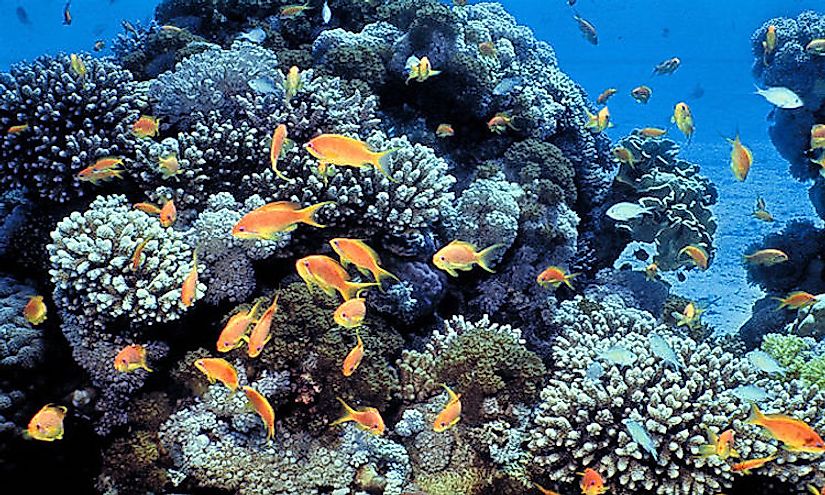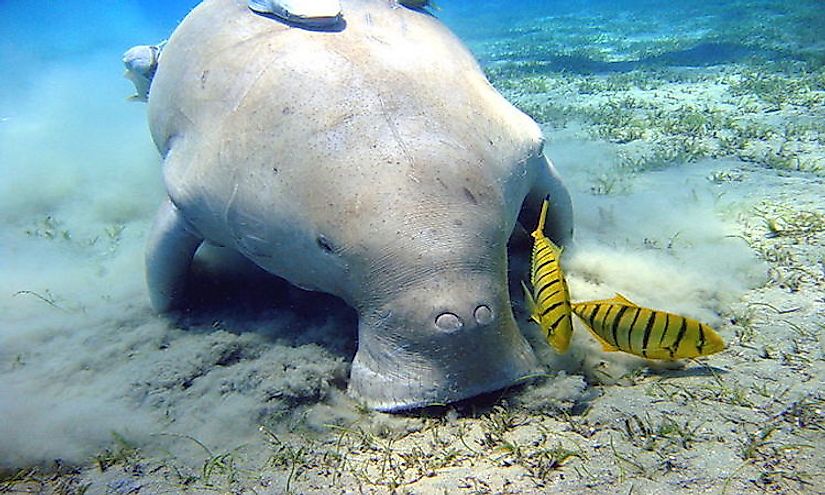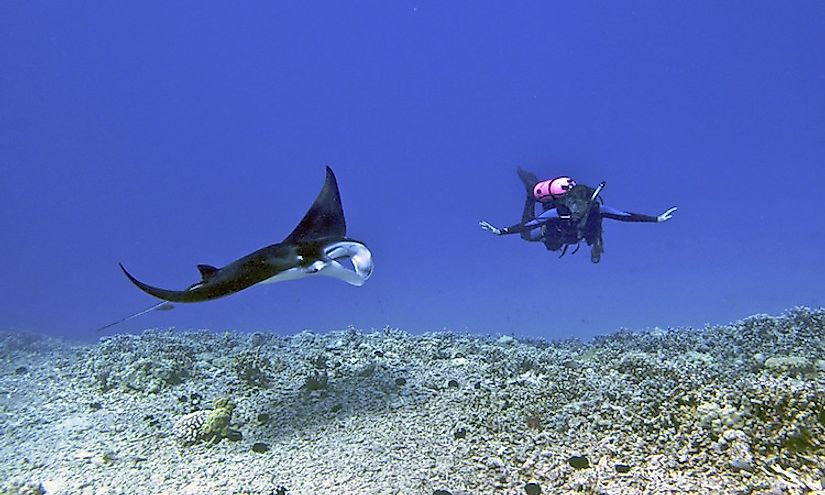Dungonab Bay And Mukkawar Island, Sudan

Less than 100 miles from Port Sudan, the area provides a sanctuary for dugongs and other marine species. The isolated islands almost untouched by human activities have retained their integrity and authenticity as one of the most natural conserved islands in the Red Sea. The biodiversity flourishes on the developed biosystems of mangrove swamps, lagoons, bays, and rock beaches and mountain ranges. The remoteness of the site also makes it difficult for tourism and other developments to take place. This lack of protective measures puts the ecosystem and marine life of the area in a dangerous position of over-exploitation by people in the shark or pet trade.
5. Description -

The Dungonab Bay and Mukkawar Island lies 25km north of Port Sudan. The Cape of Abushagara is a large lagoon extending for more than fifty miles. Coves, rocks, and sandy bays with mangrove swamps characterize the Islands. It experiences daily high tides, winds, and currents that magically change the islands and beaches. Small white sandy hills appear and disappear and reappear. The island of Mesharifa forms the largest home for the manta rays. The ecosystem sits at the southern most end of the vast lagoon. On the northern side of this site lies a lonely planet of turquoise water, flocks and flights of birds, and solitude. The whole coastline is a series of mountains that are ever changing depending on the light. The site offers the best sunsets. The Dugongs graze in the bay. During winters the manta rays migrate to the northern parts. Aside from mountains, there are also many small islands surrounded by bushes or pearls of beautiful white sands, lapped by blue, green, and turquoise waters. The mangrove swamps edge some coves mixing colors to give the national park a mixture of mud and white sands.
4. History-
The Red Sea has one of the best coral reefs in the world. The entire Sudanese coastline is part of the central part of the Red Sea. The area provides optimal conditions for the formation and growth of corals and thus harbors the most diverse reef organism. Therefore Dungonab Bay and Mukkawar Island lie at the center of the most diverse marine ecosystem in the world. The reefs of the sites also have an overall excellent condition since the area is almost untouched by human activities and have high species richness and a large number of flagship bio life. The site has no immediate resident population thanks to its remoteness the geographical position is not a major fishing ground. Since the early 1980's, the islands have attracted the world's attention for the biodiversity, but it was not internationally recognized until 2004 when it gained the world heritage status.
3. Role in Sudan's Economy -
The shark market is a lucrative business. Shark fishing in the area has attracted attention from outsiders harvest the rare but nonetheless valuable sea creatures. The site has also been a center of focus from the conservation and wildlife agents around the world. The site has also received attention from the undergraduate scientific researchers from the Red Sea University who come to the country to pursue higher degrees thus opening Sudan to modern laboratories and advanced research. Even though tourism is minimal, the national parks still chip in the economy of Sudan with the few people who love nature and exploring new sites. Sudan has also received international recognition for harboring one of the most natural ecosystems for whale sharks and the threatened turtle species. Soon that attention might bring more scientists and research bodies giving the economy a boost concerning foreign investment.There are two villages in the site; Mohammed Qol and the Dungonab villages. The area is home to these communities who fish and live from the biodiversity of the region.
2. Habitat and Biodiversity -

The area consists of the highly diversified ecosystem of coral reefs, seagrass beds, mangrove, beaches, and islets. Populations of seabirds, fish, marine mammals, sharks, turtles, manta rays, the national park provides critical nesting areas for water birds and sea turtles. Also several groups of mantar rays unique to the eastern coast of the Indian Ocean nest here too. Rare species of the whale sharks and baleen whales, Rorchals, are also live here. The Rorchals are also seen in the northern parts of Abushagara and south of Mukkawar Island. The mangrove swamps also provide habitats for herons. The Hawksbill turtles are common in the north end of Dungonab Bay, and green turtles thrive in almost every sector. The Hammerhead sharks occupy the areas around the Sanganeb Atoll, Shaab Rumi, and the reefs of Dungonab Bay. On the western side of the Mukkawar Island have a small number of small reefs sharks. The mangrove forests occupy the southern end of the Dungonab Peninsula, Mukkawar Island, and Mersa Inkefal mainland.
1. Environmental Threats and Conservation Efforts -
The area is uncontaminated. However controlled fishing and proposing fishing reserves or season regulations are among the various initiatives put forward to protect the area. The biggest problem facing the ecosystem is that the raised conservation and protection strategies exist only on paper and in preliminary studies. None of the initiatives have been implemented. The primary threat facing the area is shark fishing. Sharks fins have been in demand for a long time, and their sale though illegal is lucrative. Fishing becomes a problem in that when at sea, there is no regulation or control on fishing. Also, future threats to the area include human disturbances, exploitation, the introduction of invasive species, and habitat destruction. The immense isolation of the property makes protection difficult. The city faces a limited development of tourism, challenging flight connections, and lack of diving or residential units. Currently, the Wildlife Administration and fisheries regulations conserve the Dungonab Bay. If these conservation strategies are not acted upon, the Bay might suffer the negative impacts affected by the two villages at the coast.







